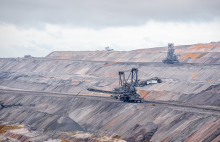Strengthening Atacama's Goat Sector: Usach Project Receives INDAP Funding
The Atacama Goat Program, a major Usach-INDAP initiative, is designed to enable Atacama goat milk producers to significantly maintain or increase their productive activity, remain in the territory, and boost their gross margin. This is achieved by strengthening the production and commercial aspects of their systems through the incorporation of practices and management techniques linked to sustainability and value addition.




